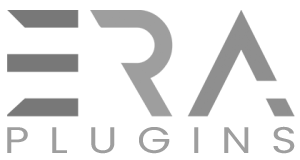Website speed is a crucial factor that affects both user experience and SEO rankings. Slow-loading websites can lead to high bounce rates and lower search engine visibility. Here are some tips to help you speed up your WordPress website:
- Choose a Lightweight Theme: Opt for a well-coded, lightweight theme that focuses on performance. Avoid themes with excessive built-in features that can slow down your site.
- Optimize Images: Compress images before uploading them to your website. You can use plugins or online tools to reduce file sizes without compromising quality.
- Use Caching: Implement caching plugins like WP Super Cache or W3 Total Cache. These plugins create static versions of your pages, reducing the need to generate content from scratch each time a user visits.
- Minify CSS and JavaScript: Minification reduces the size of CSS and JavaScript files by removing unnecessary characters and spaces. Plugins like Autoptimize can help with this.
- Enable GZIP Compression: GZIP compression reduces the size of files sent from your server to the user’s browser. This significantly speeds up page loading times.
- Reduce HTTP Requests: Limit the number of requests made to your server by combining CSS and JavaScript files. Use tools to identify unnecessary requests.
- Optimize Database: Regularly clean up your database by removing spam comments, unused data, and post revisions. Plugins like WP-Optimize can automate this process.
- Choose a Good Hosting Provider: Opt for a hosting provider that offers solid performance, adequate resources, and server-level caching.
- Content Delivery Network (CDN): Use a CDN to deliver content from servers closer to the user’s location. This reduces latency and improves loading times.
- Lazy Loading: Implement lazy loading for images and videos. This ensures that only the visible content loads initially, improving initial page load times.
- Reduce External Scripts: Minimize the use of external scripts and third-party integrations, as they can slow down your website.
- Update Plugins and Themes: Keep your plugins and themes up to date to ensure they are optimized for speed and compatibility.
- Monitor Performance: Regularly monitor your website’s performance using tools like Google PageSpeed Insights or GTmetrix. These tools provide insights and recommendations for improvements.
- Content Distribution: Consider using AMP (Accelerated Mobile Pages) for mobile users. AMP pages load quickly on mobile devices, improving the mobile user experience.
Remember that achieving optimal speed requires continuous monitoring and adjustments. Regularly test your website’s speed and make necessary optimizations to ensure a fast and efficient user experience.





